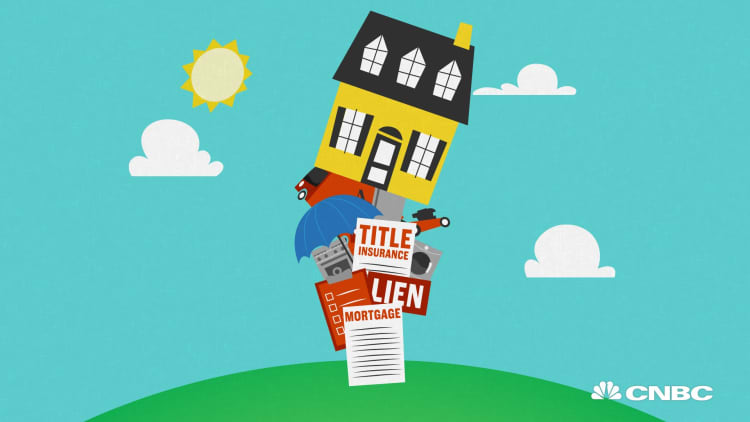
The cost of housing is rising at a fast clip, and nowhere is it more apparent than in the market for newly built homes.
Sales there are rising, but only on the higher end, and that is leaving the majority of entry-level buyers out of luck and out of homeownership because there are so few cheaper, existing homes for sale. While homebuilders claim they are trying to target the high demand from entry-level buyers, the numbers simply don't show that.
More affordable homes, those priced under $200,000, made up 44 percent of the market in 2010. Today, they are just 16 percent of new, for-sale construction, according to research by California-based John Burns Real Estate Consulting.
During the same period, the share of newly built homes priced between $200,000 and $400,000 has grown to 55 percent from 43 percent. Going even further up the price scale, the share of new homes priced above $400,000 has more than doubled to 29 percent of the market from 13 percent.
While sales of newly built homes currently stand about 9 percent higher than they were a year ago, according to the U.S. Census, they remain well below historical norms, as does new construction of single-family homes.
"More than half of non-home-owning adults cite affordability as the main reason they do not currently own a home, compared to only 22 percent who cite the need for flexibility as the main reason they do not own," noted David Jarvis, senior vice president at John Burns Real Estate Consulting. "Even with historically low mortgage rates, affordability has become a huge problem."
Housing affordability fell in the second quarter of this year, according to a survey by the National Association of Home Builders. Just more than 59 percent of both new and existing homes sold between the beginning of April and end of June were considered affordable to families earning the U.S. median income of $68,000. This is down from 62 percent in the same quarter of 2016 and marks the lowest level since the second half of 2008. Before the last housing boom and bust about 69 percent of homes were considered affordable.
"Evidence has grown that buyers are becoming much more sensitive to these persistent 5-6 percent price gains that have put the median home price at a record high," noted Peter Boockvar, chief market analyst at The Lindsey Group, in a research note. "It's great for sellers but more challenging for buyers who have to come up with a down payment on ever-rising prices. Low mortgage rates and 3 percent down payment deals help, but pricing issues helps to explain the historically low homeownership rate."
Big builders like D.R. Horton, LGI Homes and Lennar do offer low-priced products, but the vast majority of builders are still concentrating on the move-up market. While they might like to offer cheaper homes, they say the current market conditions don't allow for that.
"Rising material prices, particularly lumber, along with chronic shortages of buildable lots and skilled labor are putting upward pressure on home prices and impeding a more robust housing recovery," said Granger MacDonald, chairman of the National Association of Home Builders and a developer from Kerrville, Texas.
Despite those challenges, homebuilder sentiment is now at a four-month high, but that is likely due to improving economic conditions and a soaring stock market, both of which benefit more expensive home sales.
WATCH: The hidden costs of buying a home



